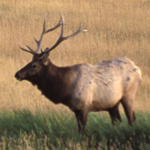| Comments: | Akodontini. The morphotypical akodontine genus stands at the nexus of a host of specific-and generic-level taxonomic problems, but a review of all classificatory variations would be more confusing than enlightening. The nomenclatural history of the following genus-group taxa has been significantly, at times confusingly, intertwined with that of Akodon: Abrothrix, Bolomys, Chalcomys, Chroeomys, Deltamys, Hypsimys, Microxus, Necromys, Thalpomys, and Thaptomys (especially see Cabrera, 1961; Ellerman, 1941; Gyldenstolpe, 1932; Massoia and Pardiñas, 1993; Reig, 1984, 1987; Tate, 1932g; Thomas, 1916c). See accounts of Abrothrix (including Chroeomys), Deltamys, Necromys (including Bolomys), Thalpomys, and Thaptomys for history and arguments on their generic status. Divorced of these taxa, those Akodon species thus far surveyed in allozymic and gene-sequence studies represent a monophyletic clade on resultant trees (Barrantes et al., 1993; D’Elía, 2003; D’Elía et al., 2003; Smith and Patton, 1993, 1999). The formation of species groups is a taxonomic edifice still under construction, with contradictory views over membership apparent in initial attempts (e.g., Hershkovitz, 1990c; Myers, 1989; Myers and Patton, 1989; Myers et al., 1990; Rieger et al., 1995) and many species unassociated for want of convincing study. Renewed interest in basic revisionary study is rendering species definitions and distributional limits of akodonts less imposing (see especially Apfelbaum and Reig, 1989; Hershkovitz, 1990c; Myers, 1989; Myers and Patton, 1989; Myers et al., 1990; Patton and Smith, 1992; Patton et al., 1989; Reig, 1987). Distributions, morphological traits, karyotypes, and nomenclatural problems of Peruvian species reviewed by Patton and Smith (1992). Although much improved, inconsistent taxonomic treatment of many species-group epithets and unnamed populations with distinctive karyotypes (e.g., Geise et al., 2001; Pardiñas et al., 2003a; Silva and Yonenaga-Yassuda, 1998) advise continued intense alpha-level attention, including regular citation of voucher specimens. Galliari et al. (1996) highlighted names that have appeared in the literature (diminutus, massoiai, minoprioi, sarmientoi), but were never properly described and are considered nomina nuda (also see Braun et al., 2000). |



